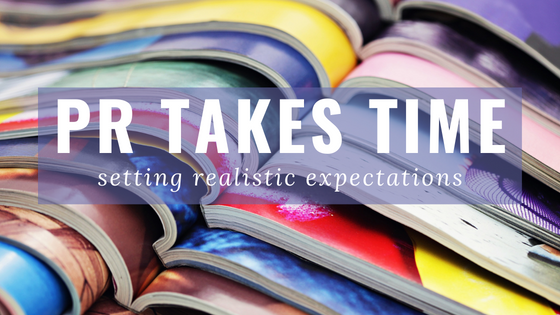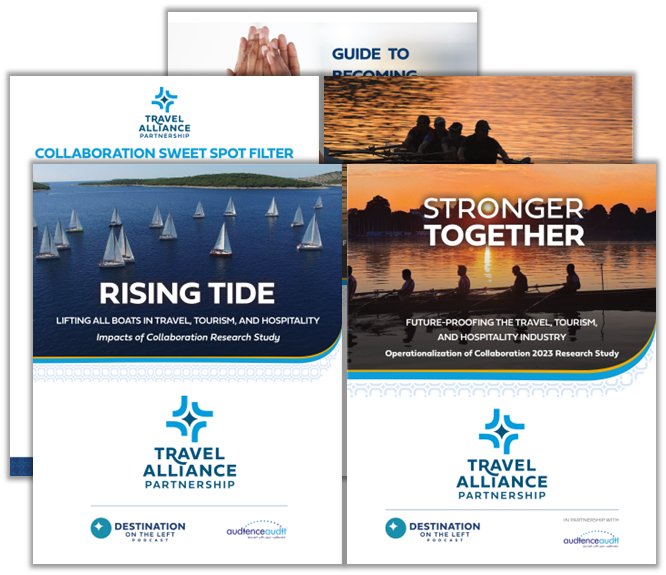Public Relations Takes Time: Setting Realistic Expectations for Your PR Efforts
Public relations is a marathon, not a sprint. It sounds like a cliché, but it’s true. Public relations and media relations take time – because at their core, they’re about building relationships. Heck, relations is right in the name!
Back in elementary school, building relationships was easy. You’d share your pudding with someone and bam, you’re best friends, telling each other secrets. Fast forward to your current role. Those friends you’re trying to make are trusted media members – anchors, editors, journalists, bloggers or influencers. And those secrets are actually stories you want the world to know. The ones worth the telling. The ones that could attract visitors to your destination.
On top of it, you’re not the only person trying to be their friend. Many other destinations are also vying for media attention. To break through the noise and develop these key relationships, it takes time, effort – and sometimes a little bit of luck. But when you crack the code of PR, it can pay off big time.
Earned media is about reaching the right person, with the right story, at the right time.

Planning for Public Relations
Always start with strategy. While you may be eager to start talking to media, taking the time to set up a strategy makes the whole process go smoother. Our 7-step strategic approach helps you determine the best path forward by utilizing research and determining situational insights. A strategic plan will determine your target audience, key messages and tactics, which will directly correlate with your public relations outreach.
Target Audience
By determining who you want to visit your destination, you can identify the publications that they read or interact with. For example, if you are looking to attract middle-aged gardeners, you may consider adding “Better Homes & Gardens” to your media list. If you are looking to get on Gen Z’s radar, you might look up TikTok influencers.
Key Messages
As you consider your target audiences, think through what resonates most with them. What information will pique their interest? What stories will sway them to visit? These ideas and details will transform into story threads.
Tactical Plan
The tactical plan outlines the tasks. For an integrated marketing plan, these might include your website, email newsletters, digital marketing and more. In a PR plan, tactics may be a mixture of proactive and reactive – such as press releases, story pitches and lead monitoring.
Identifying the right media members
Once you know who your audience is, begin thinking about what publications they read or content creators they follow. Identify between 50 and 150 KPI (Key Performance Indicator) Publications – the magazines, websites, newspapers and social media accounts where you think your story should be told.
Need help identifying your KPI Publications? Ask us!
Build out your media list(s) by finding the appropriate contacts at each of these. Keep in mind, there may be multiple people you want to connect with. Some traditional publications still have full staffs, meaning you may want to reach out to the Food & Beverage editor about your new restaurants, the Arts & Culture editor about an upcoming performance and the Lifestyle editor about the unique locale where every visitor must go.
When building out your media list(s), note any relevant information. This should include topics they write about, how frequently they’re published, where they live (or used to live, in case there’s a connection to your destination!), how they like to be reached and whether you’ve ever met or have something in common. People are switching jobs and moving industries, especially nowadays, so it’s important to research and refresh your lists frequently.
This task may seem tedious but is key to your outreach. You will want to make sure you are spending your time building relationships with the right people. PRO TIP: Organize media lists by different beats or geographies. That will make it easier to determine the best fit based on the topic of your press release or goal of your pitch.
Crafting the right pitch
Think about the different topics you want the media (or influencers) to talk about. We usually start by drafting an editorial calendar to outline which stories will be timely throughout the year, considering seasonality, events, holidays and anniversaries. Include evergreen topics that will benefit your destination any time of year. Consider the best outreach for each story – a press release for news and announcements, a pitch for an interview or in-depth story, a media alert to get on-site coverage during an event, etc.
Next, draft your outreach. It may feel like you’re sending your story out into the abyss, but there’s a real person on the other end of each email address. Use the research from your media list-building to personalize your message. Reference related articles the journalist has written or mention the media event where you last spoke with them. As you work through your media list, ask yourself:
- “Does this writer cover this topic?” If they write about craft beer and you’re pitching a new restaurant, they won’t be interested. Them being in the “food and beverage space” doesn’t cut it.
- “Do they write this type of story?” If you’re pitching an in-depth interview with one of your hotel owners, but the writer only produces listicles of properties, it’s probably not a fit.
- “What am I asking of them?” If you’re talking up the great video opportunities at your upcoming event and they write for a print publication, it’s not going to work out.
According to Muck Rack’s Annual Journalist Survey, the number one reason why journalists ignore otherwise relevant pitches is lack of personalization. Read that again.
Pitching at the right time
The third piece to the PR puzzle is timing.
Time of Day: While everyone is different, the majority of journalists prefer to be pitched in the morning – between 6 a.m. and 11 a.m. This timing also works well if you are pitching broadcast media. News producers start their day very early and wrap up around lunch time.
Goal of Coverage: Your outreach depends on the goal for the coverage. What do you want it to achieve and when do you want it to land? For on-site coverage at an event, send a media alert a day or two beforehand. Follow up with calls to the newsroom. (PRO TIP: This is one of the only acceptable times to call media.) For coverage of an event in order to create awareness and drive ticket purchases, send out a press release 4-6 weeks beforehand. Then, start pitching interviews in the weeks leading up to the event. If you’re looking to invite media on a FAM or hosted trip, reach out months in advance to get on their calendar.
Type of Publication: Similarly, consider the type of publication and its turnaround time. If you’re looking for immediate coverage, consider short lead publications – such as daily newspapers or morning news broadcasts. Then there are long lead publications that have more time to interview individuals, take photos, carefully craft a beautiful article and have it published in a monthly or quarterly publication. Somewhere in the middle are influencers and bloggers. It may take a little bit of planning to arrange a visit, but they will likely produce content while on site and shortly after their visit.
Now that you’ve reached out to the media, what’s next?
- Are they interested? Great! But the work still isn’t done. Start planning the interview, itinerary or content agreement.
- Did your message go unanswered? That’s expected. Follow up a few days to a week later. If they still don’t respond, consider a different approach or story angle.
- Did they say no or it’s not a fit? Bummer, but at least you know they read your message! Go back to the drawing board to find new writers for your pitch or a different angle for this writer.
Building Momentum
I’ll say it again… public relations is a marathon, not a sprint. Once you’ve put in the time and effort to build relationships with key media members, you are more likely to land future pitches and placements because you’ve created mutual trust. They trust your recommendations and you trust them to deliver. You will find your tried-and-true partners: the travel writer who will start booking their travel the moment you say, “I have a new attraction and I know you’ll love it!” or the morning news producer who comes to you when they have an open interview slot to fill.
Looking for a partner for your travel PR?
Public relations is about momentum. One placement isn’t going to drive the masses to your destination. (Unless it’s in a really big publication…) But a bunch of stories across different publications will get travelers’ attention. And as word starts getting out, more publications, bloggers and influencers will start noticing and want to cover it as well.
If you’re looking for a quick, flash-in-the-pan tactic that will increase – and sustain – visitation, PR isn’t it. You won’t be as successful if your approach to public relations is full of starts and stops. It’s important to consistently reach out to the media. Expect to spend at least six months to a year on consistent PR outreach before you start seeing a real return on your efforts.
Author
Related Posts
Creating a Strategic Travel and Tourism Marketing Plan: A Step-by-Step Guide
Strategic marketing is about attracting the right people, at the right time, with the right message. A clear, strategic marketing plan is your blueprint for…
